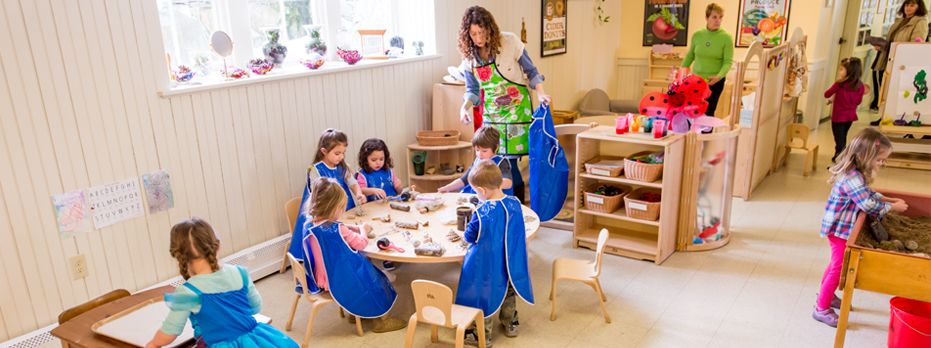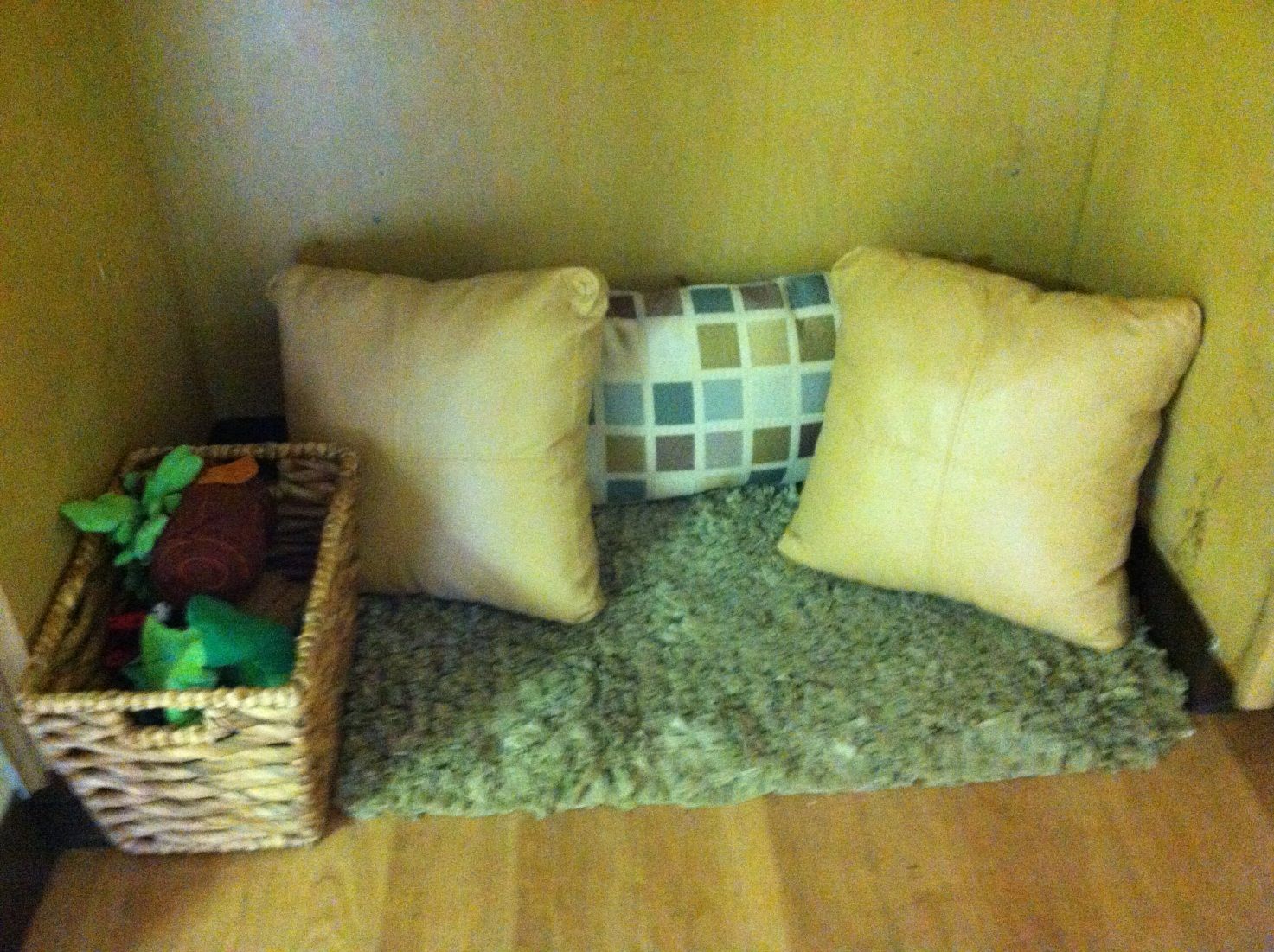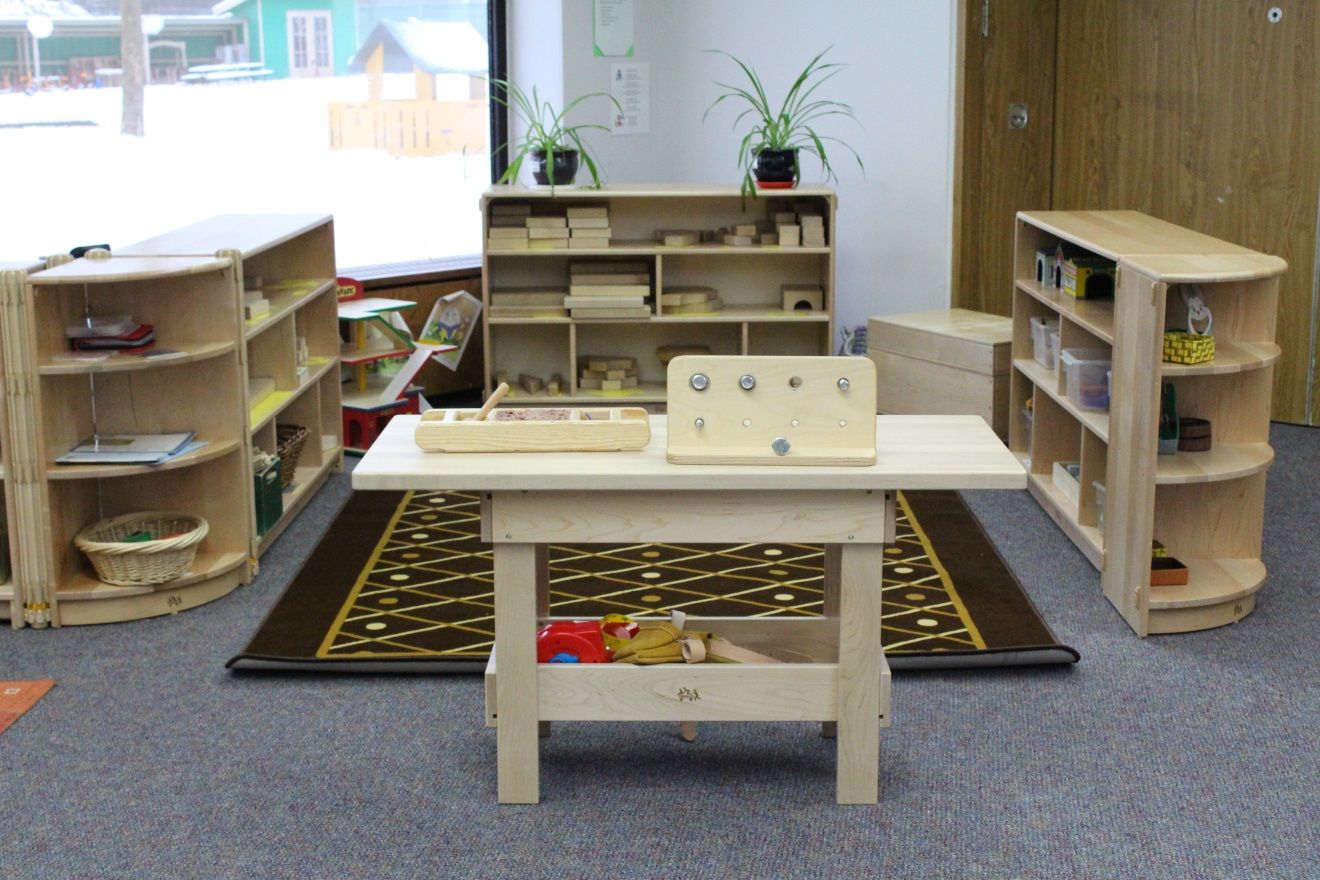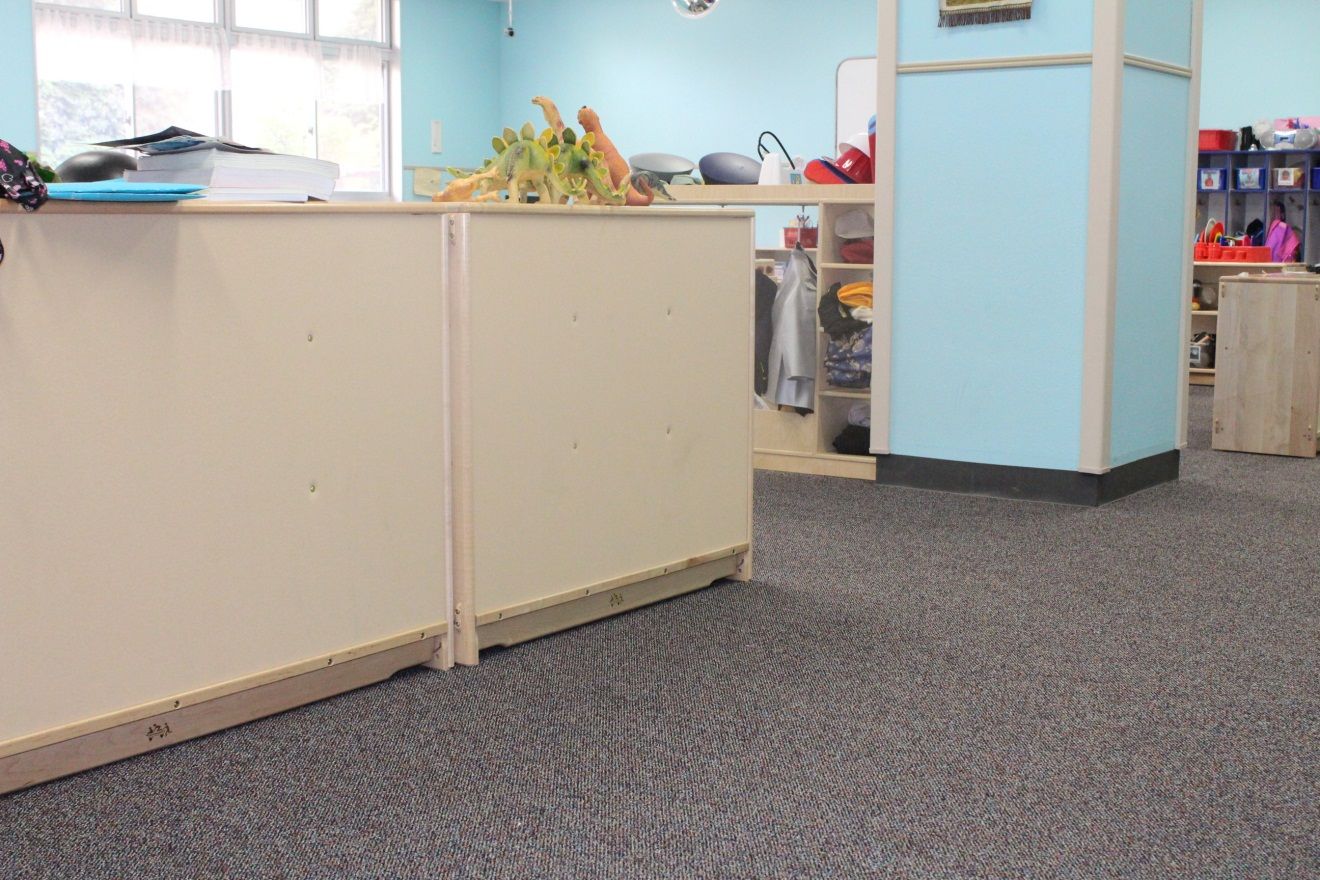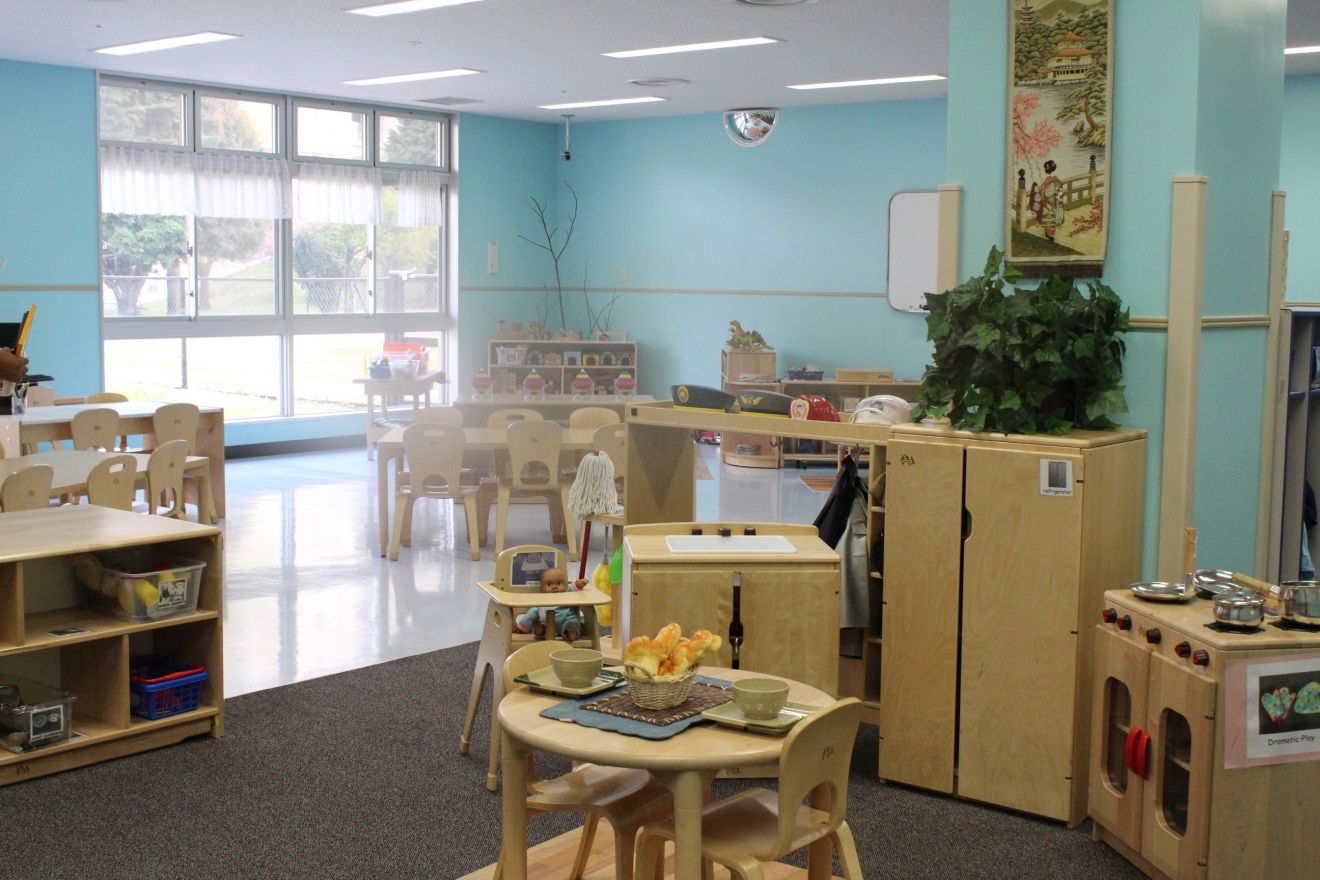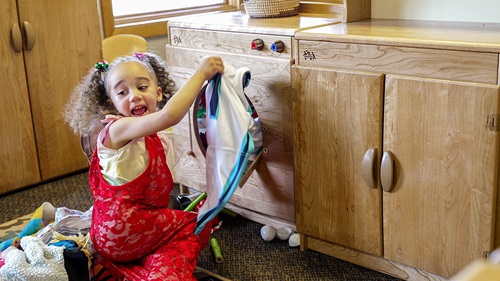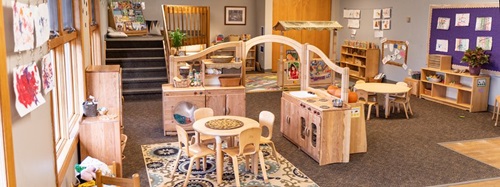Clatter in the Classroom
| February 2014Early childhood classrooms are busy, active, and energetic places filled with a cacophony of sounds including children’s laughter, conversations, and an occasional loud skirmish over a favorite toy. There are the sounds of blocks tumbling, music playing, cars and trucks racing up ramps, and dishes, pots, and pans rattling and clattering in the dramatic play corner. While this type of auditory clatter positively impacts children’s engagement with the environment and interactions with others, some classrooms are also filled with negative classroom clatter—especially in the physical arrangement of the space.
Unlike the pleasant, clattery noise of children’s laughter and play, a clattered physical environment is disruptive to children. Clattered environments are mentally noisy causing children’s thought patterns to be interrupted, and resulting in children being unable to optimally function in the classroom. Examples of environmental clatter (or negative noise to children’s brains) include over or underutilized spaces, poor traffic patterns, excessive furniture, and ineffective placement and positioning of equipment.
Clattered classrooms have a negative impact on children’s growth and development—and especially their behaviors. A classroom is clattered when children are unable to easily navigate around and within the space. High-density situations (i.e., too many children or too little space), for example, can result in aggressive and possibly destructive behaviors in young children. Many early childhood classrooms, however, are space-challenged rooms. While it may be impossible to increase the square footage of a classroom or decrease the number of children, it is possible to create an open or un-clattered space where children can move unencumbered. To get started, employ the following tips—and let the de-clattering begin!
Use Space Wisely
One strategy to de-clatter your classroom is to use what space you have wisely. In order to effectively use every square inch of your classroom, it is important to understand children’s usage of the space. To determine children’s utilization of space in your classroom, conduct a usage assessment (Carlson, 2013). Calculate how many children occupy or use each classroom area and for what amount of time. Areas should include the learning centers as well as custodial (i.e., cubbies and entryway) and mealtime spaces.
You may find areas in your classroom are either over or underutilized. An assessment of children’s usage might reveal tables located on the tile floor or the carpeted gathering area is only used for a small percentage of the day. Yet, these areas are consuming valuable real estate in your classroom. Understanding children’s usage levels helps determine if the current space allocation needs to be increased. Or, if a usage assessment indicates an underutilized space (i.e., writing center), you may decide to add elements of intrigue or provocation to increase children’s use of the space. A de-clattered classroom maximizes floor space by using every inch or square foot available to you for the most amount of time. Make every inch count.
Maintain Space Equilibrium
Once you have determined usage levels of your classroom areas, the next step to de-clatter your physical environment is to balance children’s usage of space. You can do this by imagining your classroom as a rowboat. Stand (or sit) in the middle of your classroom and observe children interacting with the environment. Imagine that your classroom is a rowboat, and you are in the middle of the boat with the oars in your hands. Where are the children located in the boat? Are more children at the stern (back) of the boat? Or, are there just a few children in the boat’s bow (front)? Perhaps the majority of children are on the portside (left) of your boat. Maybe there are very few children in the back of the boat but lots of children are on the boat’s starboard or right side. As you notice children’s locations in your rowboat, how do you feel about the stability or balance of the boat? Because many children at the back of the boat, do you feel the boat’s bow wants to tip up? Does it feel like the boat might overturn to the right because the majority of the children are in the right side of the classroom? If your rowboat appears ready to capsize, consider creating a more balanced space where children are utilizing the majority of the space equally. By understanding children’s usage level, and physically spreading them apart, the equilibrium of the space is maintained. This can be done by separating popular areas such as the dramatic play and block corners; combining less utilized spaces (i.e., children’s mailboxes with writing center); or finding previously unused small spaces to use for children’s nooks. If, for example, the door was removed, could the closet function better as a cozy mini-reading area on the bottom and display shelves on the top? Rather than having children’s cubbies in an area that is all their own, could cubbies double as mailboxes and be placed in the writing center—transforming this area into a communication center?
To find extra classroom space, a closet door was removed making room to create a cozy space on the closet floor with rug, pillows, and a basket of books and puppets.
Create Invitational Spaces
The way in which classroom equipment is arranged and positioned in the classroom can create a clattered atmosphere. Furniture positioned flat against the outer classroom wall conveys a hard look and does not send a positive message to encourage children’s engagement with the equipment. Positioning furniture at angles, on the other hand, conveys a welcoming invitation for children to come and engage within a comfortable, welcoming space.
Placing area rug at an angle from the corner of the room and then positioning shelving units just on the outside perimeter of the rug allows the space to breathe, gives children several ways to enter and exit the area, and provides the flexibility to enlarge the construction area simply by removing the workbench.
The shapes of the furniture also affect the way children—and even adults—perceive and act within the environment. The shape of a table, for example, conveys both visual and emotional messages. Rectangle and square tables project a more institutional feel because of their rigid corners and edges. They do not allow everyone seated to face each other in an equal way. Small round tables, on the other hand, create a more acute sense of coziness, which supports socialization. Because the circle or round shape encourages conversations and socialization, placing a circular shaped table in the dramatic play corner could increase the level and intensity of children’s conversations and language—resulting in positive classroom clatter.
Round tables also fit easily into small spaces and have more versatility than square or rectangular shaped ones. A circular wood table purchased from a local garage sale or consignment shop makes a perfect platform for block construction when the legs are shortened. Baskets filled with intriguing objects and building materials can be placed under the table and thereby possibly eliminating a piece of furniture to free up foot space, which again results in positive classroom clatter.
Keep Spaces Transparent
One of the easiest ways to de-clatter a classroom is to keep spaces transparent—especially in how we define the parameters of the space. Early childhood teachers typically use shelving units or bookcases to define learning centers or other areas in their classroom. This practice leads to spaces that are not only visually unavailable, but are generally physically confining and impinging. Make spaces transparent by reducing the number of shelving units hemming in the area. Instead of book shelves, use a large area rug to unify or anchor a learning center. Pull the area rug out from the edges of the room and place furniture diagonally in the area. Use a couch and coffee table (milk crate turned upside down and covered with fabric tablecloth) to establish one diagonal axis and arrange a shelving unit directly across from this furniture on the same diagonal axis. If the rug is not large enough to hold all the area’s furniture, make sure the pieces located further from the wall are anchored on the rug. Consider eliminating furniture or repositioning some furniture pieces to another area of the classroom. If your space is limited, use furniture that serves many purposes. For example, an ottoman with a storage compartment can be utilized as a seat, storage unit, or table.
Before De-Clattering
When you entered the classroom, there was a large unused carpeted area, a blue support post, and the backs of two cabinets (which faced the block corner on the other side).
After De-Clattering:
The space was made transparent by removing the shelves and repositioning the block center to the far corner of the room by the windows. The blue post acted as an anchor to the dramatic play corner and a focal point upon entry. The sink and stove were placed at angles to create a cozy, welcoming look.
An Invitation
You are cordially invited to begin to de-clatter your classroom. Begin to think differently about how your physical space is structured and organized. Search for new ways of creating transparency in your space. Find unused spaces and create special places where children want to be. Experiment with angles. Find balance. Be willing to learn and to be surprised. Enjoy positive and wonderful clatter of children’s laughter and conversations. RSVP.
Extra Tips for De-Clattering Your Environment
- Create more than one pathway to and from learning centers.
- Select versatile furniture capable of double duty (i.e., ottoman with storage area) and are easily adaptable to children’s projects and play.
- Create more foot space than shelf space. Decide what furniture you need and what works for you. Then, remove all useless and unused pieces from the classroom.
- Keep the floor as clear as possible so as to make spaces easily accessible.
- Use every square inch of the classroom space.Find small places of unused space and create soft havens for children to be. A soft pillow, beanbag, or small comfortable chair tucked in a corner can create a private space for someone needing to be alone. Purchase a padded chair at a consignment shop, cut off the legs, and it becomes a perfect snuggle up, quiet place.
- Add casters to pieces of equipment that you need to keep mobile so spaces are easily changed to meet the needs of children’s play.
- Rather than bulletin boards, build shelving all the way up to the ceiling or above doors or windows and use for displaying children’s work.
Resources:
Carlson, F. (March/April, 2013). Retail 101: What programs can learn from retail stores. Child Care Information Exchange, 28-30.

